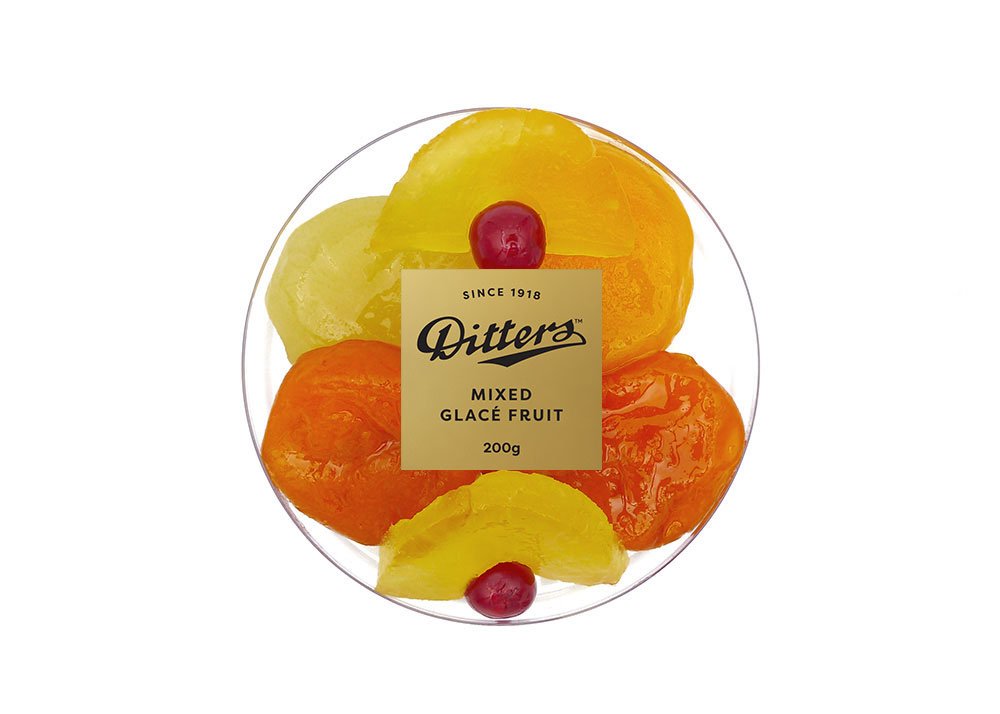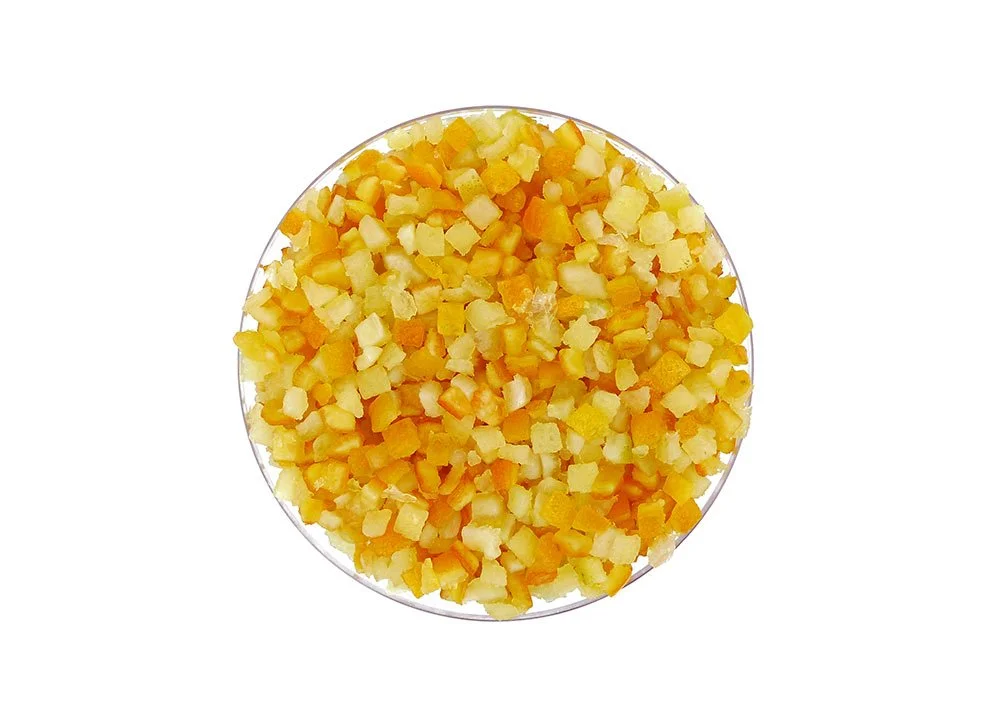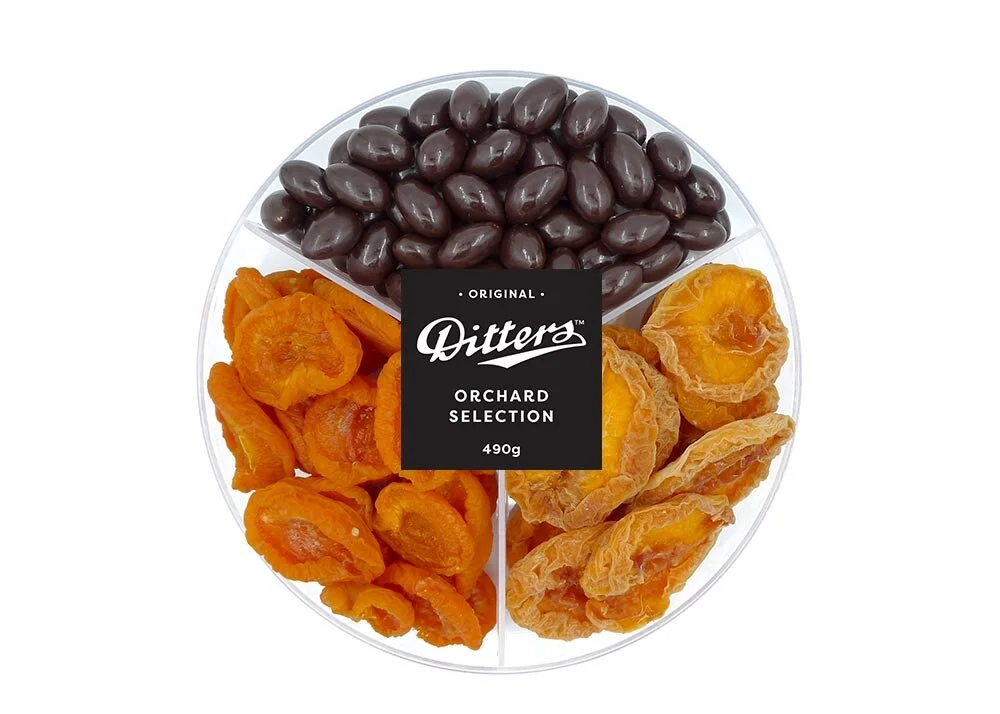Where to find Glacé Fruit
Glacé fruit is also known as candied, glazed or crystallised fruit. It has a place in history and gives us a feeling of nostalgia, reminding us of a time when preserving food naturally was a necessity. Glacé fruit has actually been around since the 14th century, when candied plums, apricots, and nuts were popular. By the early 1900s, glacé fruit was a common ingredient in many recipes and were popular sweet treats on special occasions. Today, glacé cherries, pineapple, ginger and citrus peel are typically used in fruitcakes, panettone, and cassata, enjoyed mainly as a festive treat.
Quick history of glacé fruit
The ancient cultures of China and Mesopotamia are known to have preserved fruit in palm syrup or honey. The Arabs subsequently developed the modern idea of candied fruit and it was through them that candied fruit made its way to the West. The French and Italians are known as having perfected the glacé technique, which involves placing whole fruit, smaller pieces of fruit, or fruit peel that is just ripe in a heated sugar syrup. The process takes several days, weeks or months, depending on the size and type of fruit. This continual submersion of the fruit in sugar syrup causes the sugar syrup to gradually replace the water content of the fruit, preventing spoilage and allowing the fruit to retain its appearance and taste for a long time.
What can be candied?
Candying fruit is a long and arduous process. The shape and size of fruit determines the method. Some fruits can be candied whole and others need to be in smaller pieces. The most common candied fruits come from the citrus family: oranges, lemons and citrons. Candied citrus peel is commonly and widely used. Some crystallised fruits, such as ginger, are coated with fine sugar, giving it a frosted appearance. Other fruit such as pears, apples, plums, figs, kumquats, kiwi fruit, cherries, peaches, melons, apricots, dates, quinces and pineapple candy well. Crystallised green angelica stem has been popular in the past too. Nuts can also be crystallised. Unlike fruit, nuts are simply dipped into boiled sugar syrup and then laid out to set and harden. The most elaborate examples of this process are sugared almonds.
How to use glacé fruit
Glacé cherries, apricots, ginger, pineapple and citrus peel are delicious in a fruitcake. Each country and culture has its own version of fruitcake but one of the finest examples of Australian made fruitcake is the Ditters Gourmet Cake, handmade in small batches in Adelaide, South Australia.
Glacé fruit can also be used in sweet yeasted bread such as Stollen, or in Pannetone, a large, domed loaf traditionally eaten at Christmas and Easter. Panforte, mince pies and Florentines all use candied fruit.
You can add glacé fruit to biscuits and muffins, or use it to garnish a wide range of cakes and desserts. A modern and delicious way to enjoy glacé fruit is on a cheese, fruit and nut platter.
Use only the best quality glacé fruit when baking for a special occasion or entering a cake competition, such as in the Sydney Royal Easter Show or Royal Adelaide Show.
“The glacé fruit that I purchased from you was beautiful. I am delighted to tell you that my cake won a blue ribbon at the 2022 Sydney Royal Easter Show. I couldn’t have done it without your quality fruit. Thank you for the standard of fruit you are providing, it has become difficult to find in Australia for the past few years.”
Where to buy glacé fruit online
In Adelaide, Ditters Nuts has been known for its glacé fruit trays and gift packs since World War II, when they developed an export line of glacé fruits that locals could send to their British relations. Ditters’ famous nuts and glacé fruits were packaged into wooden crates and a van load of parcels were sent to the post office each week for many years. Ditters glacé fruit became so famous that on a visit to the Ditters factory in 1945, the Duchess of Gloucester ordered three to be sent to HRH Princess Margaret, c/- Buckingham Palace. Today, you can buy glacé fruit from Ditters online and from good quality food retailers in Adelaide.
• Welcome to Ditters •
Ditters is a family-owned, South Australian food business in Adelaide. Famous for finest quality nuts, gourmet fruit and nut cakes, glacé fruit, dried fruit, chocolate and gift hampers.



























